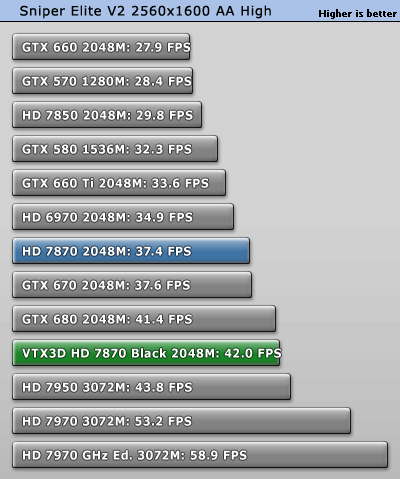[journalist C]: Hi, just to confirm, what you said means that
Radeon HD 7970 GHz Edition stays AMD's fastest single-GPU graphics card until the end of the year?"
Devon:
"Yes."
[journalist F]: "Actually it's not on the little speech I'm afraid, but an earlier question that was answered, which stated that the 7970 would still be your most powerful single-GPU product until the end of the year, why is it so? Are there any technical reasons for that, because at that point you would have announced that part almost two years ago? Is it a technical issue, or is it simply because you don't feel the need to put something newer out there?"
Darren: "Definitely, I got a two-part answer for that one. We launched the 7970 in December of 2011, and then we followed up with the GHz Edition in July of 2012.
So the GHz Edition has been out there for the better half of the year now, and that will continue to live on until the end of 2013. From a technical perspective, no,
there's absolutely no technical reason; from a product perspective, we have the world's fastest GPU now, with the GHz Edition, and as Roy mentioned, the GK110 is coming, but is something NVIDIA is leveraging from a completely different space. It's a Tesla product, it's a workstation product, it really was never intended for the consumer market, and I think that way they're kinda shoe-horning that product into their GeForce stack. So, we took them by surprise by having the world's fastest GPU, and you see all these kinds of reactions from them right now, but we're very confident that the 7970 GHz Edition is the best GPU for enthusiast gamers out there. So this is purely for marketing performance reasons, nothing technical."
I was asking about independent numbers for the whole market, not some cherrypicking online listing.
Box, this is the point I was making. AMD is growing their sales for HD7000 cards.
Roy: "Can I jump in on that? The recent sales success of our "Never Settle Reloaded" bundle shows us the appetite of consumers for that product [7970 GHz Edition] is wonderful. I know this is a European call, but Newegg.com in the USA were sold out. We're seeing
record sales throughout Europe. So as measured by people spending money, I'd say that we're in pretty good shape."
Roy: "…and Darren touched on it earlier, that the simple fact is that the 7000 series is still ramping.
We're still seeing higher sales, growing sales on the 7000 series, so yeah, there's an appetite in the channel for product stability, and we're seeing that it actually accelerates the sales. You can argue that the channel cycles previously were a bit too forced."
[journalist H]: "While I'm really hear you in the price-performance side of the product, what about image and marketing? I mean, even if NVIDIA only pumps out a handful of GeForce Titans, they can still run around saying they have the fastest GPU for gamers, how are you going to compete with that?"
Roy: "I don't think we can comment until we've seen it. Based on what we know so far,
I don' think that this (GeForce Titan) is a threat to our business."
Darren: "…and it's not like it's a surprise. You know, the
GK110 has been known about for a long time. Our roadmap stayed, once we knew about it. We didn't need to react."
http://www.techpowerup.com/180345/C...adeon-Graphics-Teleconference-Transcript.html
----
My guess is AMD doesn't consider the GK110 a competitor since 10K unit launch is too limited and the price is in the stratosphere for 99% of consumers interested in GPU upgrades. I don't agree with their logic since the Average Joe will think the Titan is the fastest single GPU and think right away that any GTX600 > any HD7000. It's brilliant marketing by NV once again

Also, if NV launches GK114/lower-priced GK110 parts in 2013, then AMD will have gotten their strategy wrong. I guess it's a risk they are taking.







